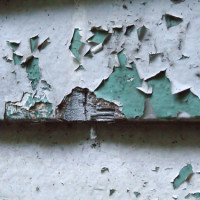Condo Owners Who Rent Residential Apartments in New York City Must Comply with Local Law One with a Presumption of Notice of Lead Paint

The Appellate Division issued a new holding clarifying that condo owners who lease residential units in New York City are subject to the same New York City Law lead paint law that applies to other residential landlords. The Court explained in A M.G. v. Pham, 180 A.D.3d 491, 119 N.Y.S.3d 107 (1st Dep’t 2020) that the unit owner is obligated by Local Law 1 and not the condo board.
New York City enacted the Childhood Lead Poisoning Prevention Act of 2003, NYC Admin Code § 27-2056.1 et seq [Local Law One eff. 2004] to essentially force residential landlords and managers to be pro-active about checking and abating lead paint. That law was substantially changed in 2020, greatly expanding landlord liability from multiple dwellings (legally defined as three or more apartments) to, effective 2021, any private residence where at least one unit is occupied (not necessarily rented) by someone other than the owner or the owner’s family. Now the Appellate Division has made it clear that Local Law 1 applies to owners of condos who may only rent one apartment and are often mom and pop investors.
Local Law 1 changed the common law, imposing a presumption that all buildings constructed prior to 1960 contain lead paint, so lead paint plaintiffs no longer have the initial burden of demonstrating notice to the landlord that there is lead paint in the apartment. This presumption also applies to buildings built before 1978 if the landlord as actual knowledge of lead paint in the building. The landlord can provide proof to rebut this presumption and receive an exemption but the 2020 amendments sunset that exemption upon turnover of the unit; i.e. when the unit is vacated by the current tenant.
In addition, Local Law One requires the landlord to take certain pro-active measures to check if there are children in the apartment and keep records. The 2020 amendments put teeth into those provisions. The landlord must inquire at lease commencement/renewal/turnover and annually if any children under age six reside in the unit. “Reside” is now defined as ten or more hours per week so the child does not have to be “living” in the unit full time. Indeed, it applies to children who visit but do not sleep in the unit. Thus, if Grandma watches the child for a few hours for a few days per week, the child is “residing” in the unit for purposes of Local Law 1. The notice to the tenant must be sent (in either English or Spanish) by January 16 of each new year and must also provide the tenant with a pamphlet about lead paint. Notice of the lead paint provisions also has to be included in the lease. The tenant must respond to the annual notice within twenty-one days or by February 15. If the answer changes during the year, the tenant is required to notify the landlord, but the landlord may still be on notice even if tenant fails to do so, if, for example, an employee or agent of the landlord observes the child in the apartment. Typically, plaintiffs claim that a porter saw the child or that the landlord’s agent saw the child when he/she came to collect rent. If the tenant fails to respond to the annual notice, the landlord must inspect the apartment for a child by March 1. If the landlord cannot obtain access to the apartment, the New York City Department of Health must be notified.
If a child under six is reported or found to be present, the landlord must inspect both the unit and all common areas for lead paint and notify the Department of Health if abatement of lead paint is required. Local Law One requires the landlord to keep records of all notices, responses, inspections, and abatements for ten years. Management companies and agents have the same liability as the landlords. The latest amendments add substantial fines to landlords who fail to keep all the required records including the notices, pamphlets, abatement, and testing records, etc. Indeed, the City now mandates the Department of Housing Preservation and Development (“HPD”) to conduct at least 200 random audits each year of landlords to check for the paperwork.
Local Law One also has a “turnover” provision pertaining to landlords who acquire a building that was constructed prior to 1960 (or a building where the purchaser knows there is lead paint). The landlord must check and abate lead paint in any apartment where there is a vacancy regardless of whether children were present or will be present in the future. This provision imposes the duty on the purchaser to abate the lead paint hazard but does not provide a time period to do so. The presumption in law when time period is omitted is a “reasonable time”. The turnover provision has not been tested by the courts at this time, but the law essentially codifies “buyer beware” for purchasers of multiple dwellings in New York City who could be immediately ambushed by lawsuits by acquiring neglected buildings. The new amendments to the statute add an additional fine if the apartment is found to have lead paint and there has been tenant turnover since 2004; a fact that would likely apply to virtually every apartment.
Contact the Law Offices of Richard A. Fogel, P.C. for counsel on landlord’s liabilities and obligations pertaining to lead paint.
